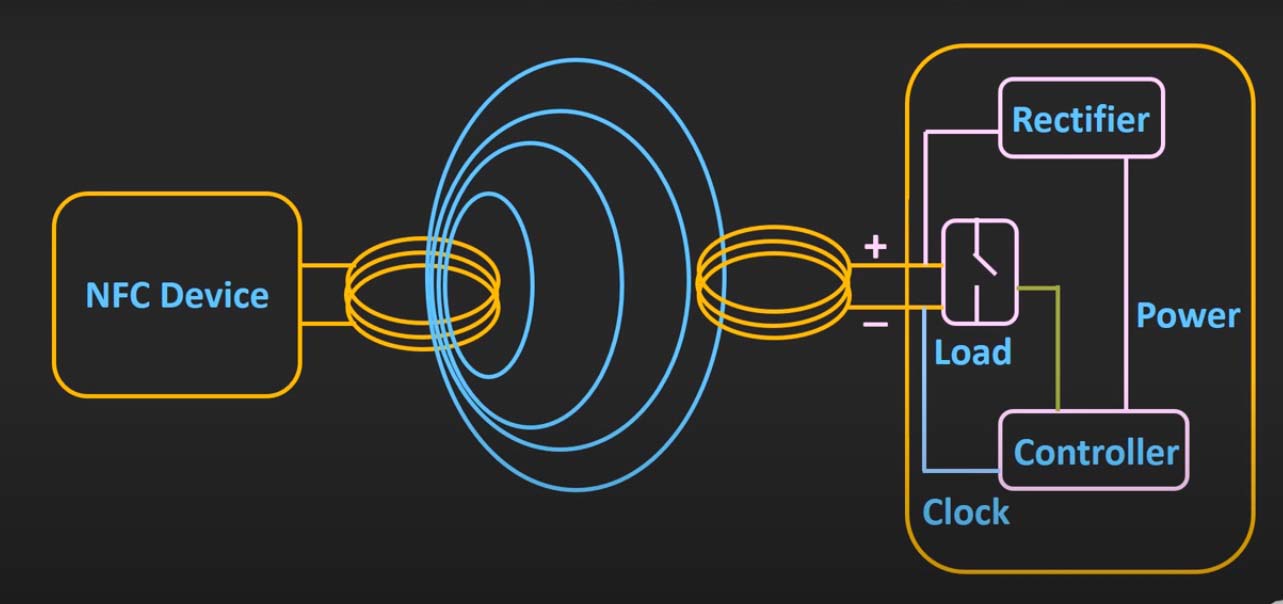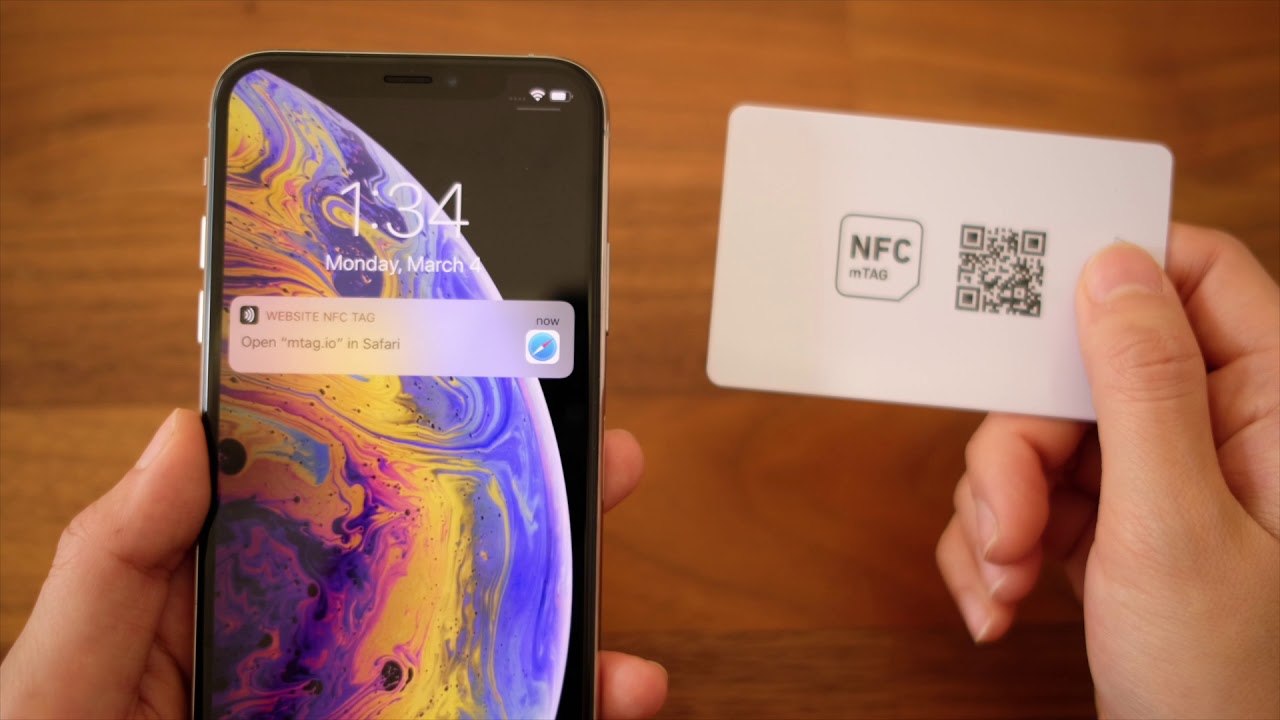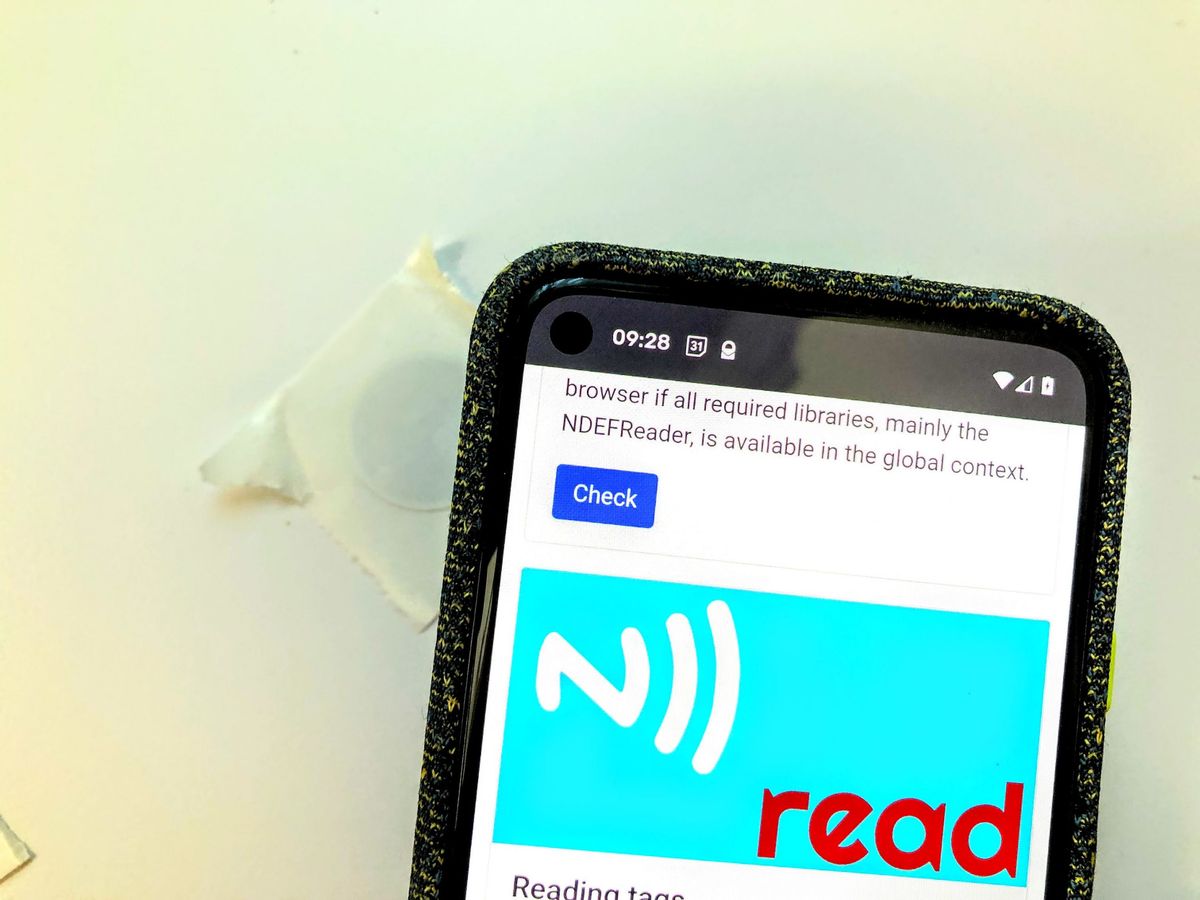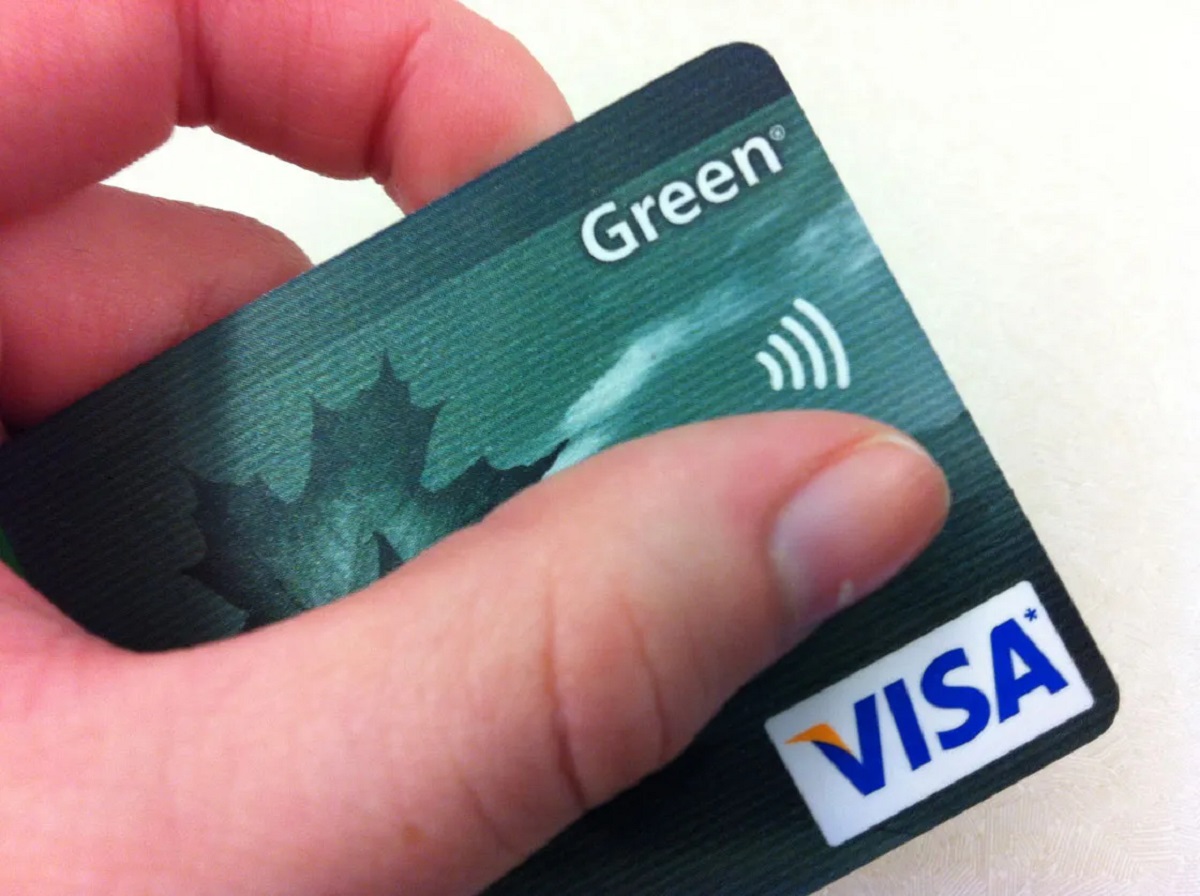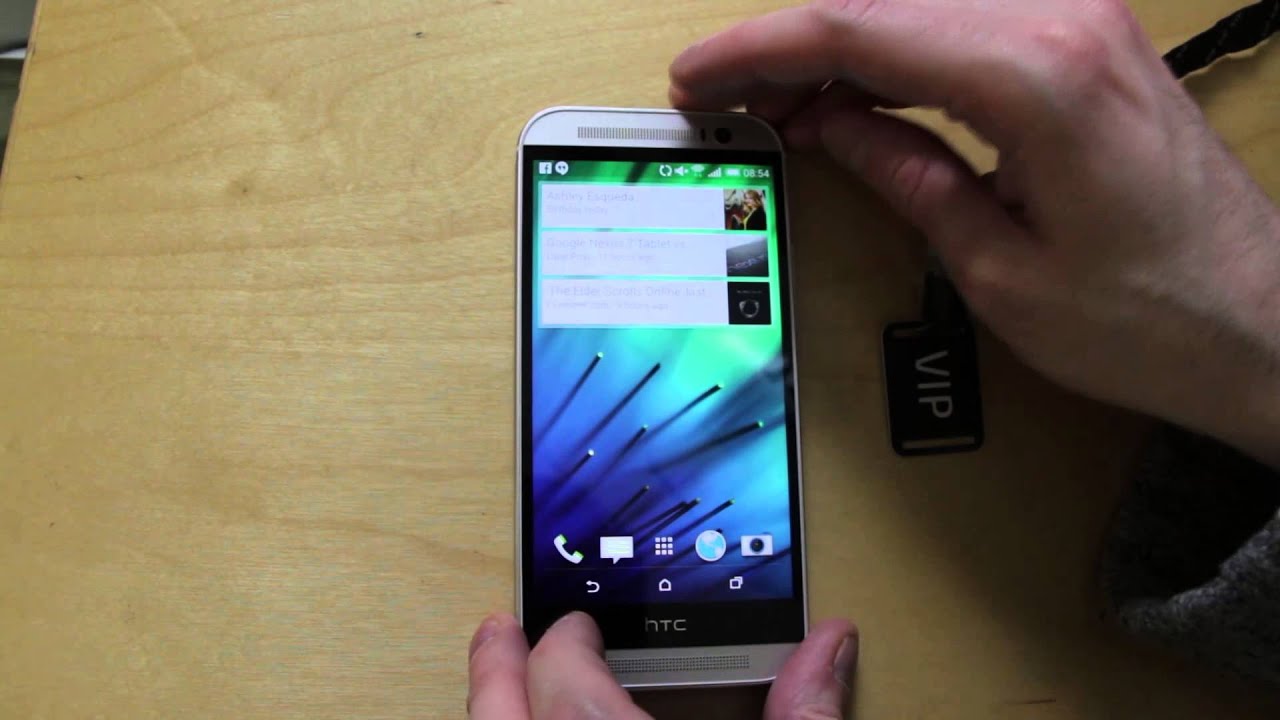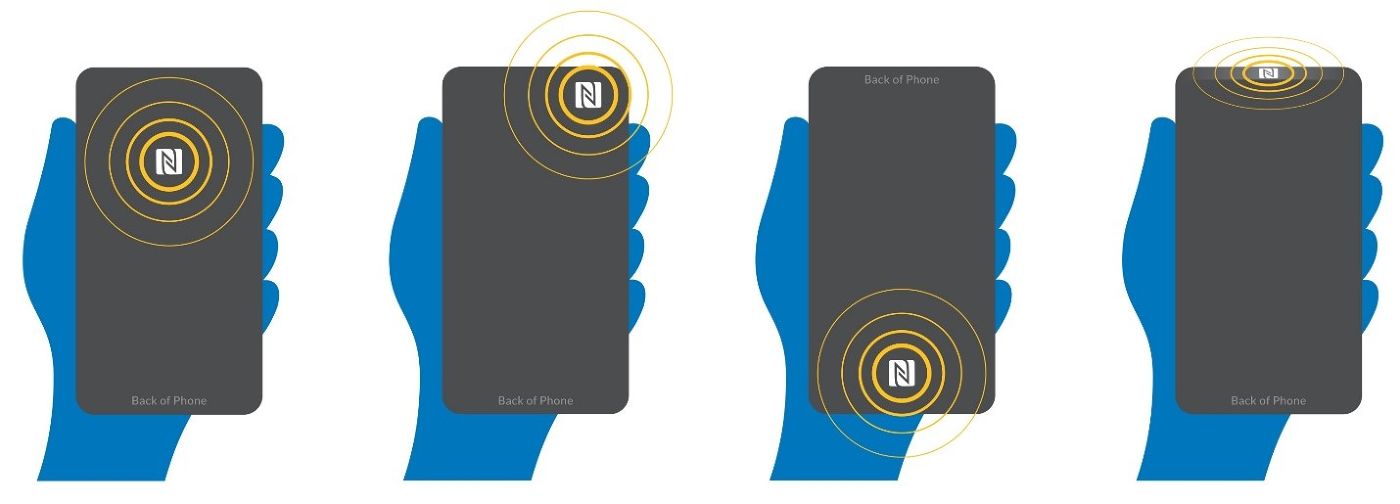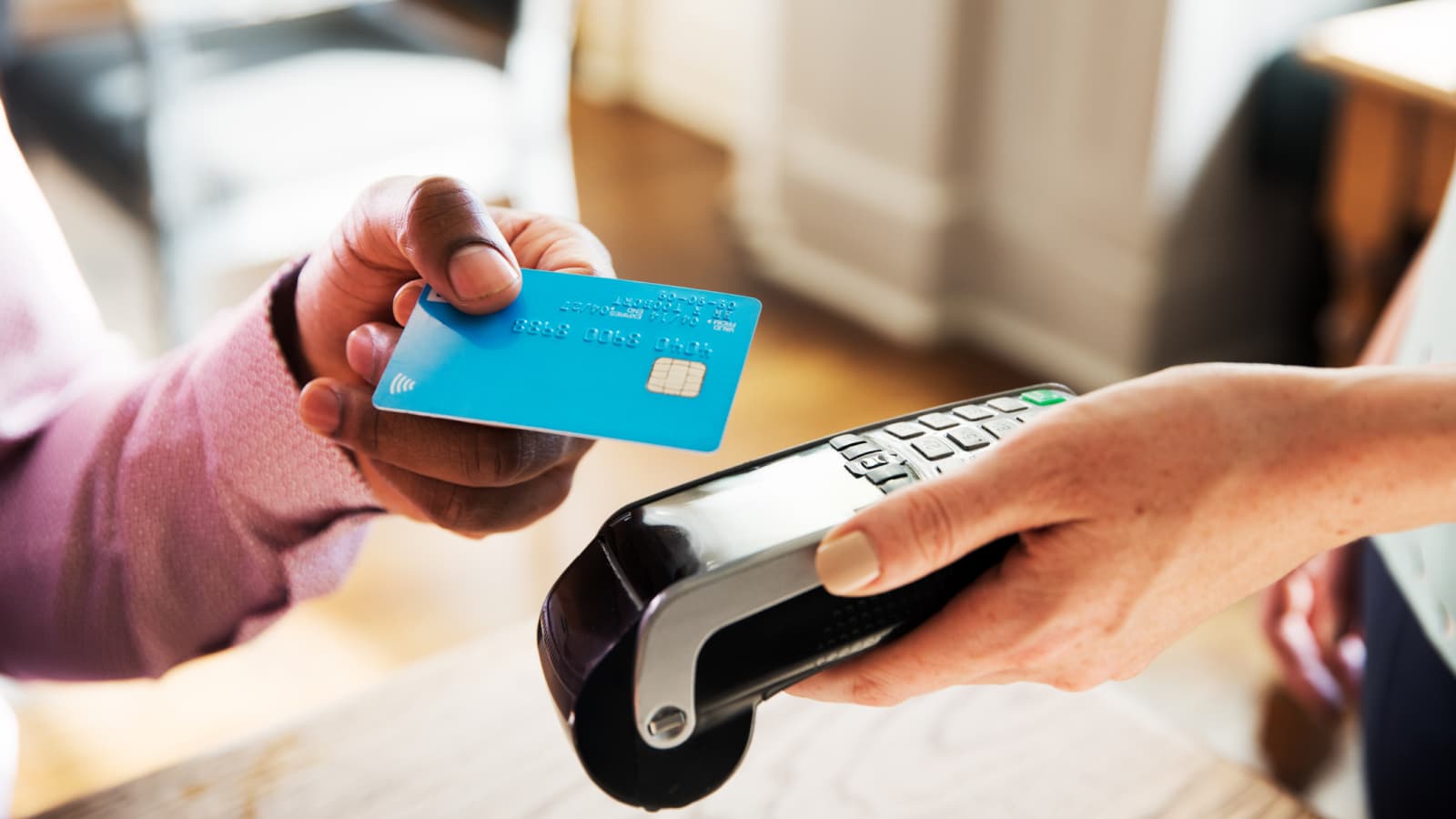Introduction
As our world becomes more interconnected, technological advancements continue to shape the way we communicate and interact with our devices. Near Field Communication (NFC) is one such technology that has gained widespread popularity in recent years. NFC allows for seamless communication between devices by simply holding them close to each other. While NFC offers many convenient applications, there may be situations where you would want to block NFC communication.
NFC technology enables a variety of functions, such as contactless payments, data transfer, and access control. However, there are instances when NFC communication can be a potential security risk or even an annoyance. For example, you might want to prevent unauthorized access to your contactless payment information, protect your personal data from being read by malicious actors, or avoid unintentionally triggering NFC-enabled devices in crowded areas.
To understand how to block NFC communication, it is important to grasp the fundamentals of this technology. NFC relies on electromagnetic fields to facilitate communication between devices. By disrupting or blocking these signals, it is possible to prevent NFC communication. In this article, we will explore different methods to effectively block NFC communication and protect your privacy and security.
What is NFC Communication?
Near Field Communication (NFC) is a wireless communication technology that enables short-range data transfer between two NFC-enabled devices. It operates on the principle of electromagnetic induction, allowing devices to establish a connection by simply being in close proximity to each other, typically within a few centimeters.
NFC communication relies on two main components: an NFC reader/writer and an NFC tag. The reader/writer is typically integrated into a device, such as a smartphone or tablet, while the NFC tag is a small chip embedded in objects like smart cards, stickers, or wearable devices.
When an NFC-enabled device comes close to an NFC tag, the electromagnetic field produced by the reader/writer induces a current in the tag’s antenna. This current powers the tag and allows it to transmit information back to the reader/writer. This information can include data such as contactless payment details, identification information, or commands for various applications.
NFC technology offers several benefits, including simplicity, convenience, and security. It allows for quick and effortless communication between devices, eliminating the need for manual input or pairing procedures. NFC is widely used for contactless payments, enabling users to make transactions by simply tapping their devices on payment terminals. It also finds applications in access control systems, public transportation cards, loyalty programs, and more.
Overall, NFC communication is a powerful and versatile technology that has revolutionized the way we interact with our devices and the world around us. However, there may be instances when you want to block NFC communication to maintain privacy, security, or prevent unintended interactions. Let’s explore some methods to effectively block NFC communication in the next section.
Why Would You Want to Block NFC Communication?
While NFC technology offers numerous benefits, there are several scenarios where you may want to block NFC communication. Let’s delve into some common reasons why individuals may choose to disable or block NFC:
1. Privacy concerns: NFC-enabled devices can transmit sensitive personal information, such as contactless payment details, identification data, or even health-related information stored on wearables. By blocking NFC communication, you can prevent unauthorized access to this data and maintain your privacy.
2. Security risks: In certain circumstances, NFC communication can pose security risks. Malicious actors may attempt to exploit vulnerabilities in NFC technology to gain access to sensitive data or initiate unauthorized transactions. Blocking NFC can mitigate these risks and help protect against potential fraud or identity theft.
3. Avoiding unintentional interactions: In crowded areas or public transportation, NFC-enabled devices can inadvertently trigger unwanted interactions. For example, bumping into someone may activate NFC-based payment systems or unintentionally transfer files. Blocking NFC communication ensures that these interactions do not occur accidentally.
4. Battery life preservation: NFC functionality, when enabled, consumes power. By disabling NFC, you can conserve battery life on your device, particularly in situations where NFC communication is not required or actively used.
5. Electromagnetic interference: In some cases, NFC signals may interfere with other electromagnetic devices nearby. By blocking NFC communication, you can prevent any potential interference issues, ensuring the proper functioning of other devices.
These are just a few examples of why you might want to block NFC communication. Whether you need to safeguard your personal information, avoid accidental interactions, or preserve battery life, understanding how to disable or block NFC communication can be invaluable. In the next section, we will explore various methods that allow you to effectively block NFC on your devices.
How Does NFC Communication Work?
Near Field Communication (NFC) communication operates on the principles of electromagnetic induction and radio frequency identification (RFID) technology. Let’s take a closer look at the key components and functioning of NFC:
1. NFC Reader/Writer: The NFC reader/writer is the device that initiates the communication process. It generates an electromagnetic field and is typically integrated into devices like smartphones, tablets, or other NFC-enabled devices.
2. NFC Tag: The NFC tag is a small chip embedded in objects such as smart cards, stickers, or wearable devices. It contains an antenna and stores information that can be transmitted to the NFC reader/writer.
3. Electromagnetic Field Induction: When the NFC-enabled device comes into close proximity (typically within a few centimeters) of an NFC tag, the reader/writer generates an electromagnetic field.
4. Power Transfer: The electromagnetic field induces an electric current in the antenna of the NFC tag, providing power to the tag. This eliminates the need for a separate power source in the tag.
5. Data Transfer: Once powered, the NFC tag can transmit data back to the reader/writer through changes in the electromagnetic field. This data can include contactless payment details, identification information, or commands for various applications.
6. Communication Modes: NFC offers different modes of communication: read-only (where the tag provides information), read-write (for data transfer between devices), and peer-to-peer (for two-way communication between two NFC-enabled devices).
7. Security Features: NFC communication incorporates security measures to protect sensitive data. Encryption and authentication protocols ensure secure data transfer and prevent unauthorized access or tampering.
NFC communication is designed to be simple and efficient, enabling seamless interaction between devices. It offers a high level of convenience, especially in applications such as contactless payments, electronic ticketing, access control, and data exchange.
By understanding the technical workings of NFC, you can better appreciate the methods available to block or disable NFC communication. In the next section, we will explore different methods that allow you to effectively block NFC on your devices and protect your privacy and security.
Methods to Block NFC Communication
If you wish to block NFC communication on your device, there are several effective methods available. Let’s explore some of the most popular options:
Method 1: Using an NFC-blocking Sleeve or Case: An NFC-blocking sleeve or case is a protective cover designed to shield your device from NFC signals. These sleeves or cases are typically made with materials that block or disrupt NFC communication signals, effectively preventing any unwanted interactions.
Method 2: Applying an NFC-blocking Sticker or Film: NFC-blocking stickers or films are adhesive accessories that can be applied to the back of your device or over specific areas that emit NFC signals. These stickers or films contain materials that absorb or reflect NFC signals, preventing them from reaching other devices.
Method 3: Using an NFC-blocking Wallet or Purse: A wallet or purse equipped with NFC-blocking technology can provide an effective way to block NFC communication. These accessories feature special materials that obstruct the transmission of NFC signals, safeguarding your contactless payment information and preventing unauthorized access.
Method 4: Disabling NFC on Your Device: Most NFC-enabled devices offer the option to disable NFC functionality in the device settings. By turning off NFC, you effectively block all NFC communications. This method is straightforward and does not require any additional accessories.
Method 5: Using an NFC-blocking Fabric or Material: There are fabrics and materials available that possess NFC-blocking properties. These can be used to craft pouches, sleeves, or pockets for your devices, creating a physical barrier that prevents NFC signals from passing through and interfering with other devices.
It’s important to note that while these methods effectively block NFC communication, they may also prevent legitimate NFC interactions. Therefore, consider your specific needs and use cases before opting for a method to block NFC.
Each method has its advantages and considerations. When choosing a method, consider factors such as convenience, device compatibility, effectiveness, and any additional features the method may provide.
By utilizing one of these methods, you can effectively block NFC communication and protect your privacy, security, and battery life. Experiment with different methods to find the one that best suits your needs and enhances your overall user experience.
Method 1: Using an NFC-blocking Sleeve or Case
One effective method to block NFC communication is by using an NFC-blocking sleeve or case for your device. These specially designed accessories provide a physical barrier that prevents NFC signals from reaching your device, effectively blocking any unwanted interactions. Here’s how it works:
1. Select the Right Sleeve or Case: Look for an NFC-blocking sleeve or case that is compatible with your device model and size. There are various options available on the market, specifically designed to fit different devices, such as smartphones or tablets.
2. Insert Your Device: Slide your device into the NFC-blocking sleeve or snap it into the NFC-blocking case. Ensure that the device is securely held within the accessory, providing complete coverage.
3. Block NFC Signals: The NFC-blocking sleeve or case is made of materials that disrupt or absorb NFC signals. These materials include metal layers, foils, or specialized fabrics that block electromagnetic fields. When the sleeve or case is closed or wrapped around your device, it creates a shield that prevents NFC signals from reaching your device.
4. Preserve Device Functionality: It’s important to select an NFC-blocking sleeve or case that not only blocks NFC communication but also allows access to other device functionalities, including ports, buttons, and cameras. Choose a well-designed accessory that provides convenient access while blocking NFC signals.
Using an NFC-blocking sleeve or case provides a simple and hassle-free way to block NFC communication. It offers the advantage of easy installation and removal, allowing you to toggle between NFC enabled and blocked states as needed. Additionally, these accessories provide an extra layer of protection for your device, safeguarding it against scratches, drops, and other physical damage.
Keep in mind that while an NFC-blocking sleeve or case can effectively prevent NFC interactions, it also blocks legitimate NFC functionalities such as contactless payments or data transfer. Consider your specific needs and use cases before using this method to block NFC communication.
By utilizing an NFC-blocking sleeve or case, you can confidently protect your privacy, security, and personal data from potential NFC-related risks and unwanted interactions.
Method 2: Applying an NFC-blocking Sticker or Film
Another effective method to block NFC communication is by applying an NFC-blocking sticker or film to your device. These adhesive accessories are designed to disrupt or absorb NFC signals, preventing them from reaching your device and effectively blocking NFC interactions. Here’s how you can utilize this method:
1. Select an NFC-blocking Sticker or Film: Look for an NFC-blocking sticker or film that is compatible with your device model and size. These accessories are typically available in various shapes and sizes to fit different devices such as smartphones, tablets, or smartwatches.
2. Clean the Device Surface: Ensure that the surface of your device is clean and free from any dust or debris. Use a soft cloth or alcohol wipe to gently clean the area where you will be applying the NFC-blocking sticker or film.
3. Apply the Sticker or Film: Carefully peel off the backing of the NFC-blocking sticker or film, align it with the desired area on your device, and gently press it down. Smooth out any bubbles or creases with your fingers or a microfiber cloth to ensure proper adhesion.
4. Block NFC Signals: The NFC-blocking sticker or film contains materials that absorb or reflect NFC signals, effectively blocking their transmission. These materials can include metal layers, conductive foils, or specialized fabrics. When applied to your device, they create a barrier that prevents NFC signals from reaching your device’s NFC antenna.
5. Ensure Functionality: It’s important to choose an NFC-blocking sticker or film that does not interfere with other device functionalities, such as camera lenses or fingerprint sensors. Opt for accessories that are designed with precise cutouts, allowing easy access to essential features while blocking NFC communication.
Using an NFC-blocking sticker or film provides a convenient and versatile way to block NFC communication. These accessories are lightweight, discreet, and can be easily removed if necessary. They are particularly useful if you prefer not to use a bulky case or sleeve.
Keep in mind that while an NFC-blocking sticker or film effectively blocks NFC signals, it also prevents legitimate and desired NFC interactions, such as contactless payments or data transfer. Consider your specific needs and use cases before using this method to block NFC communication.
By applying an NFC-blocking sticker or film to your device, you can confidently protect your privacy, prevent unintended interactions, and maintain control over NFC communication.
Method 3: Using an NFC-blocking Wallet or Purse
If you want to block NFC communication and protect your contactless payment information, using an NFC-blocking wallet or purse is an effective method. These accessories are equipped with special materials that prevent NFC signals from reaching your cards or devices. Here’s how you can utilize this method:
1. Choose an NFC-blocking Wallet or Purse: Look for a wallet or purse specifically designed with NFC-blocking technology. These accessories contain materials that disrupt or absorb NFC signals, creating a shield that prevents unauthorized access to your contactless payment cards or devices.
2. Organize Your Cards and Devices: Place your NFC-enabled cards or devices into the designated slots or compartments in the NFC-blocking wallet or purse. Ensure that each card or device is securely held within the accessory to maximize the NFC-blocking capabilities.
3. Block NFC Signals: The NFC-blocking wallet or purse is designed with layers of materials that obstruct the transmission of NFC signals. These materials can include metal foils, conductive fabrics, or specialized shielding layers. When the wallet or purse is closed, these layers act as a barrier, preventing NFC signals from reaching your cards or devices.
4. Consider Additional Security Features: Some NFC-blocking wallets or purses may offer additional security features, such as RFID-blocking technology. This extra layer of protection safeguards your cards and devices against unauthorized scanning or skimming of personal information.
Using an NFC-blocking wallet or purse provides a convenient and practical way to block NFC communication and protect your contactless payment information. These accessories not only offer security but also help you organize and keep your cards and devices in one place.
It’s important to note that while an NFC-blocking wallet or purse effectively blocks NFC signals, it also prevents legitimate NFC interactions for contactless payments or other supported functionalities. Make sure you consider your specific needs and use cases before using this method to block NFC communication.
By utilizing an NFC-blocking wallet or purse, you can confidently prevent unauthorized access to your contactless payment information and maintain control over NFC communication, ensuring the security of your financial transactions and personal data.
Method 4: Disabling NFC on Your Device
If you want a straightforward and effortless way to block NFC communication, you can simply disable NFC on your device. Most NFC-enabled devices provide an option to toggle the NFC functionality on or off in the device settings. Here’s how you can use this method:
1. Access the Device Settings: Open the settings menu on your device. The location of the NFC settings may vary depending on the device model and operating system. Look for options related to “NFC” or “Connection Settings.”
2. Disable NFC: Once you have accessed the NFC settings, toggle the switch or button to disable NFC functionality on your device. This action effectively turns off NFC communication and blocks any NFC interactions.
3. Verify NFC Status: You can confirm that NFC is disabled by checking the status in the device settings or the quick settings menu. Ensure that the NFC indicator is turned off or displays “NFC disabled.”
Disabling NFC on your device is a simple and quick way to block NFC communication. It allows you to have complete control over when NFC is active, preserving privacy, security, and battery life.
Do keep in mind that by disabling NFC, you will not be able to use any NFC-related functionalities, such as contactless payments or data transfer. If you need to use NFC in the future, you can easily re-enable it through the device settings.
This method is suitable if you only need to block NFC temporarily or want to conserve battery life by disabling unnecessary wireless functionalities. It doesn’t require any additional accessories and gives you full control over when NFC communication is active.
By disabling NFC on your device, you can confidently block NFC communication and prevent any unwanted interactions or security risks related to NFC-enabled functionalities.
Method 5: Using an NFC-blocking Fabric or Material
If you want to block NFC communication while maintaining the flexibility to interact with your device, using an NFC-blocking fabric or material is an effective method. By incorporating these materials into pouches, sleeves, or pockets, you can create a physical barrier that prevents NFC signals from passing through and interfering with other devices. Here’s how you can utilize this method:
1. Select an NFC-blocking Fabric or Material: Look for fabrics or materials that possess NFC-blocking properties. These can include specialized fabrics with conductive elements, metallic layers, or shielding materials specifically designed to disrupt NFC signals.
2. Create a Barrier: Craft a pouch, sleeve, or pocket using the NFC-blocking fabric or material. Ensure that the design and dimensions of the accessory effectively enclose your device and provide adequate coverage to block NFC signals. The fabric or material should act as a physical barrier between your device and potential NFC interactions.
3. Place Your Device Inside: Insert your device into the NFC-blocking pouch, sleeve, or pocket. Make sure it fits securely within the accessory, ensuring maximum coverage and contact with the NFC-blocking fabric or material.
4. Block NFC Signals: The NFC-blocking fabric or material disrupts or absorbs NFC signals, preventing them from reaching your device. It creates a shield that effectively blocks NFC communication while still allowing you to access and use your device’s functionalities when needed.
Utilizing an NFC-blocking fabric or material offers versatility and customization options, as you can create accessories of various sizes and designs tailored to your specific device and preferences. This method provides an additional layer of protection against unintended NFC interactions and unauthorized access to your personal data.
Keep in mind that while an NFC-blocking fabric or material can effectively block NFC communication, it may also interfere with legitimate NFC functionalities, such as contactless payments or data transfer. Consider your specific needs and use cases before using this method to block NFC communication.
By using an NFC-blocking fabric or material to create pouches, sleeves, or pockets for your device, you can confidently block NFC communication while still maintaining the flexibility to interact with your device when desired.
Conclusion
Near Field Communication (NFC) technology has revolutionized the way we communicate and interact with our devices. While it offers convenience and versatility, there may be situations where you want to block NFC communication to protect your privacy, security, or prevent unintended interactions.
In this article, we explored five effective methods to block NFC communication. Here’s a recap of these methods:
1. Using an NFC-blocking Sleeve or Case: These accessories provide a physical barrier that prevents NFC signals from reaching your device, effectively blocking NFC communication while providing device protection.
2. Applying an NFC-blocking Sticker or Film: These adhesive accessories disrupt or absorb NFC signals, preventing them from reaching your device and effectively blocking NFC interactions.
3. Using an NFC-blocking Wallet or Purse: These accessories are designed with NFC-blocking materials that safeguard your contactless payment information, protecting against unauthorized access to your cards and devices.
4. Disabling NFC on Your Device: Most NFC-enabled devices allow you to disable NFC functionality in the device settings, effectively blocking NFC communication with a simple toggle switch.
5. Using an NFC-blocking Fabric or Material: Crafting pouches, sleeves, or pockets with NFC-blocking fabric or material creates a physical barrier that prevents NFC signals from interfering with your device while still allowing you to interact with it.
It’s important to consider your specific needs and use cases when choosing a method to block NFC communication. Each method offers its own advantages and considerations, allowing you to find the one that best suits your requirements.
By effectively blocking NFC communication, you can maintain your privacy, protect sensitive information, prevent unwanted interactions, and preserve battery life. Whether you opt for a sleeve, sticker, wallet, disable NFC, or create an accessory with NFC-blocking fabric, you can confidently control when and how NFC is used on your device.
Experiment with these methods to find the one that aligns with your preferences and enhances your overall user experience. With the ability to block NFC, you can have peace of mind knowing that you have control over your NFC communication and can protect your privacy and security as desired.







